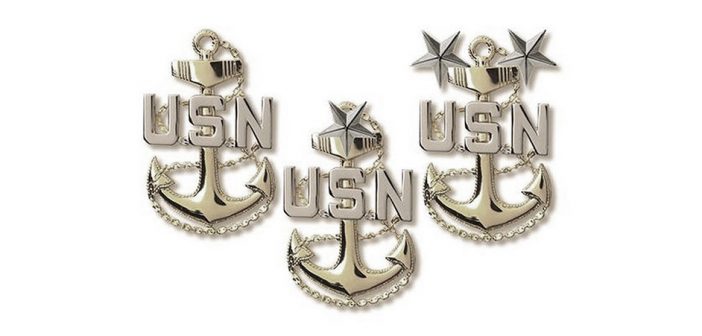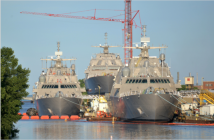The Navy will start the service’s annual quality control check of retirement-eligible chief petty officers on Dec. 9.
That’s when, for the ninth time since 2009, the service will convene a Senior Enlisted Continuation Board in Millington, Tenn.
The panel’s mandate is simple — weed out those with misconduct or declining performance in the Navy’s collective chief’s mess across all communities — active, reserve and full-time support.
The board only looks at retirement-eligible E-7 through E-9 sailors with at least three-years time in grade as of the board’s start.
There’s no mandatory quotas the board is looking to cut, that’s the purview of “Selective Early Retirement Boards,” known as SER boards. While SER boards’s primary mission is to cut people, it’s the exact opposite is the case for this continuation board. Simply put, it’s here to ensure everyone is living up to standards.
That’s why, according to Vice Adm. John B. Nowell, the Navy’s top uniformed personnel officer, will “carefully consider, without prejudice or partiality,” the records eligible CPO’s with an eye on finding “sailors whose service is no longer in the best interest of the Navy.”
Each record gets reviewed by hand, with board members looking primarily for “documented misconduct” or “substandard performance,” or both, within the past 3 years,” Nowell wrote in NavAdmin 233/19, released Oct. 11.
The primary red flags looked for, include having an individual trait grade of 2.0 or lower on any evaluation during the time reviewed, Nowell wrote. In addition, they’ll look for any “circumstance related to performance” that leads to a sailor to be unable or no longer eligible to perform their on the job duties such as the “loss of a security clearance in a rating that requires” the sailor to have one.
Flagged records will be reviewed by the full board, which can also take into account any mitigating circumstances, too. To be sent home requires a majority vote of the entire panel.

Source:Chief of Naval Personnel
The Navy deems eligible for the board any chiefs, senior chief and master chief in the active and full-time support components if they have 19-years of active service and three-years time in rate as Aug. 31. In the drilling reserve, the requirement is a full 20-years of “qualifying service” towards retirement as well as the three-years time in rate.
Officially, no one is exempt from the process, including Master Chief Petty Officer of the Navy (SW/IW/AW) Russ Smith. Even those sitting the board will be reviewed by Navy officials before being picked for the panel.
However, those who already have approved retirements on or before Sept. 1, 2020 won’t be reviewed. In addition, those already selected to pick up warrant officer or limited duty don’t get reviewed, either.
Anyone not continued on active duty by the board will have to retire on or before Sept. 1. Commanding Officers can request operational waivers for critical need sailors, but even they won’t be spared long and must be retired by Dec. 1, 2020.
During the course of the past eight boards, nearly 61,000 records have been reviewed with just under 2,000 forced to retire. That’s about a 3 percent chance of not being continued over the past decade. In 2012, the board sent home 7.7 percent of those reviewed — 593 of the 7,884 eligible chief petty officers, by far the largest number of retirements dished out by the board.
But lately the numbers have been trending down. That’s a sign, officials say, that the boards are working. Last December’s board, looked at 7,984 E-7 through E-9’s and sent home just 1.5 percent or 120.
The boards were the brain child of then Master Chief Petty Officer of the Navy (SS/SW) Rick West, who was faced in 2009 with rising misconduct in the mess saw the boards significant deterrent. It was he who saw the board as a “pure quality cut” only and battled some in the Navy’s leadership at the time – and won – the practice of not setting quotas for the boards.
He also tracked misconduct in the mess, a practice that was continued by his successor in “the seat” then MCPON Mike Stevens. The practice was discontinued by MCPON Steven Giordano, but the continuation board stayed, becoming a nearly annual fixture on the Navy’s list of administrative boards.
Twice during the past decade, scheduling conflicts caused officials to cancel boards in fiscal year’s 2014 and again in 2017.
Two-years ago, when the current Vice Chief of Naval Operations, Adm. Bob Burke was the Navy’s top uniformed personnel officer, he approved the idea of the same quality cut boards for senior O-5’s and O-6’s.
More details are available in here.



![CAVASSHIPS Podcast [Jun 12 21] Episode 1…We are Underway](https://defaeroreport.com/wp-content/uploads/2021/06/CAVASShips_Podcast-214x140.jpg)
